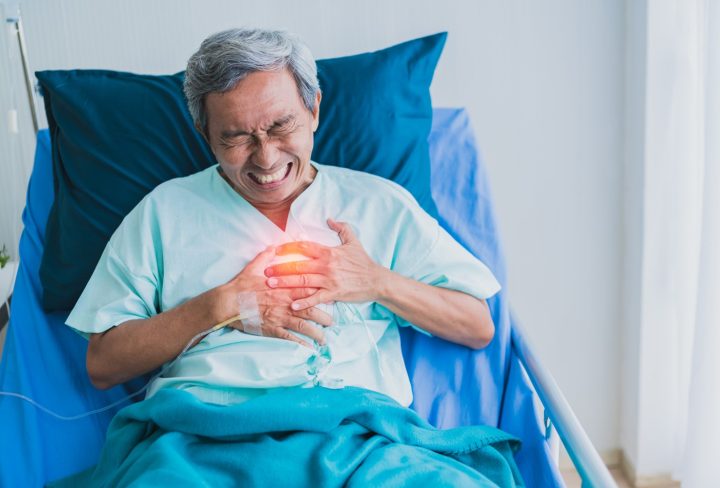Sudden cardiac arrest is a medical emergency in which your heart suddenly stops beating.
When that happens, blood stops flowing to the brain and other vital organs of your body. If left untreated, it can cause death within minutes.
Sudden Cardiac Arrest affects 1000 people a day striking all ages.
Warning Signs of Cardiac Arrest You Need to Know
If someone suffers cardiac arrest, they collapse suddenly and will be:
- Unconscious
- Unresponsive
Other signs are:
- Chest pain
- Shortness of breath
- Heart palpitations
- Fainting
- Dizziness
A cardiac arrest can lead to death if there is no medical help immediately.
Cardiac Arrest: Causes
- Arrhythmias (Irregular Heartbeat)
- Respiratory Failure (in children) due to choking or drowning
There is no known cause in a few cases.
Cardiac Arrest: Triggers and Risk Factors
Several factors may increase the risk of cardiac arrest, including:
- Heavy Consumption of Alcohol
- Physical Exertion
- Obesity
- Heart Problems
- Diabetes, Blood Pressure and
- Recent Use of Drugs
- Drinking Too Much Coffee
- High Cholesterol
- Stress
- Flu Infection
Vigorous physical, especially in men, and alcohol misuse are the most common risk factors for cardiac arrest.
Cardiac Arrest: Diagnosis
Few ways to diagnose a cardiac arrest:
- Electrocardiograms (ECG) to detect disturbances in the heart rhythm
- Blood tests to look for signs of a heart attack
- Chest X-ray to notice other symptoms of heart disease
- Echocardiogram to identify the damage to the heart
Your doctor may also order a few other tests to determine the heart’s pumping capacity.
Cardiac Arrest: Treatment
Immediate Treatment
- Cardiopulmonary resuscitation (CPR): It uses chest compressions to replace the heart’s pumping action and helps move small amounts of blood from the heart to the brain
This helps to improve cardiac arrest survival.
- An Automatic defibrillator: This helps deliver a brief electrical current to the chest to stop the abnormal impulses to help the heartbeat regularly.
It may take more than one shock to make the heart pump on its own again.
Long-term Treatment
If you survive a cardiac arrest, you need other treatments to reduce the risk of another attack.
- Medications to lower blood pressure and cholesterol
- Surgery to repair the damaged blood vessels or heart valves
- Exercise and dietary changes to lower cholesterol levels
6 Ways to Prevent Cardiac Arrest
Cardiac arrest happens when the heart’s blood-pumping process stops suddenly. Though we cannot control a few risk factors, we can follow some simple ways to prevent many causes.
You can lower your risk of cardiac arrest and other heart diseases by:
- Limit Alcohol and Smoking
- Eat Healthy
- Reduce Stress
- Exercise Regularly
- Regular Heart Screening
Sudden Cardiac Arrest: Complications
Cardiac arrest causes unconsciousness due to the loss of oxygen-rich blood in the brain and leads to-
- Abnormal Heartbeat
- Brain damage (if the arrest lasts for more than 8 minutes) and
- Death (if the arrest lats for more than 10 minutes)
Cardiac Arrest vs Heart Attack
| Cardiac Arrest | Heart Attack |
| Caused by irregular heart rhythms | Caused by a blockage that stops blood flow to the heart |
| Can cause immediate death if proper steps are not taken immediately | Quite serious and sometimes fatal |
Is Cardiac Arrest Painful?
Some people experience chest pain before they become unconscious from cardiac arrest.
Fast facts on Cardiac Arrest
- Cardiac arrest can Happen at any age
- People who play sports are at increased risk for cardiac rest
- Heat stroke can cause cardiac arrest
- Emergency response times is 6-12 minutes
How to Perform CPR In a Case of Cardiac Arrest?
- Check for the patient’s responsiveness by asking them if they are okay
- Make sure that the patient lies flat on his back to avoid any injuries during compressions
- Position the heel of one hand on the chest (between the nipples)
- Place the heel of the other hand over the first and lace your fingers together
- keep your elbows straight, align your shoulders directly on your hands, and perform compressions at a rate of 100-120 per minute. Allow their chest to recoil between compressions
- Repeat the compression cycle until the person starts to breathe or medical help arrives


